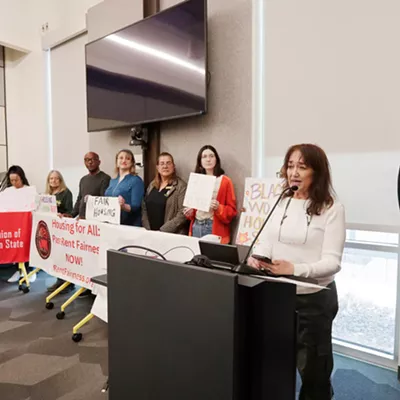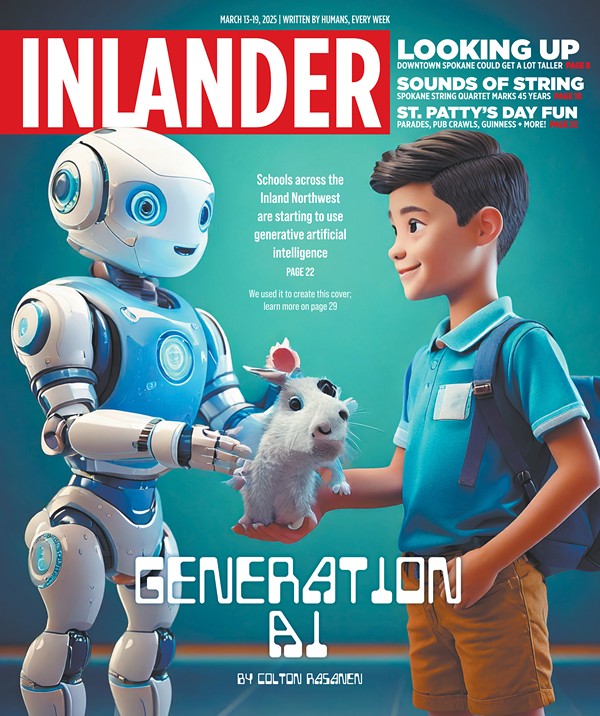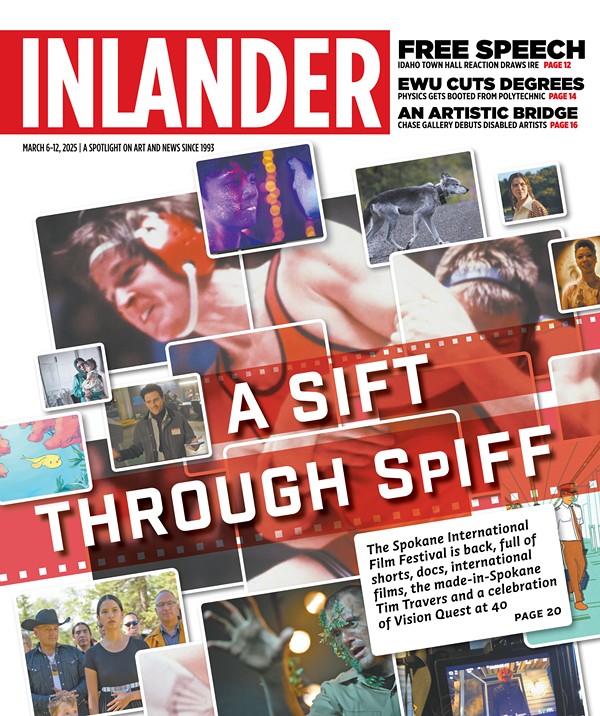Pox on Parks
[
{
"name": "Broadstreet - Instory",
"component": "25846487",
"insertPoint": "4",
"requiredCountToDisplay": "4"
},{
"name": "Broadstreet - Empower Local",
"component": "27852456",
"insertPoint": "8",
"requiredCountToDisplay": "8"
},{
"name": "Broadstreet - Instory",
"component": "25846487",
"insertPoint": "12",
"requiredCountToDisplay": "12"
},{
"name": "Broadstreet - Instory - 728x90 / 970x250",
"component": "27852677",
"insertPoint": "18",
"requiredCountToDisplay": "18"
},{
"name": "Broadstreet - Instory",
"component": "25846487",
"insertPoint": "5th",
"startingPoint": "23",
"requiredCountToDisplay": "24",
"maxInsertions": 100
}
]
by Robert Herold & r & & r & & lt;span class= "dropcap " & F & lt;/span & rom among many terrific contenders, my choice from the list of finalists for Most Egregious Visual Insult to the Olmsted Legacy has to be the visual garbage dumped on Audubon Park by our own Parks Department. It's a triple whammy -- the ugly dented cans chained to a sign, with a graffiti-covered dumpster on one side and a shocking-blue Honey Bucket to finish the scene. This little tableau must impress the neighbors who, each day, get to gaze out on this truly classic mess.
Mayor Dennis Hession may not shine when it comes to urban aesthetics, but since he claims to be our economic development guy, I urge him and Parks Director Mike Stone to tune into the legacy of the city's parks, which were envisioned by the Olmsted Brothers and brought to life by Aubrey White. To start, they should read the 1982 Atlantic Monthly article written by Professor James Q. Wilson, entitled "Fixing Broken Windows." Wilson and his co-author, George Kelling, hit upon a simple but powerful insight that many cities have cashed in on. They argued that neighborhood deterioration proceeds through a predictable sequence of events beginning with evidences of decay. This can take many forms: garbage not picked up, graffiti, a broken window left unrepaired. Let's make our own contribution to Wilson's list: dented, ugly, galvanized trashcans.
The loud message these cans send out? WE JUST DON'T CARE!
It's a message that invites vandalism. Wilson argues that this message creates a sense of civic abandonment, which serves to invite the bad guys to move in. And when that happens, the city is well into a downward spiral of urban decay.
Wilson would certainly urge us to replace these ugly cans with tidy trash receptacles, which we should hide from view inside wooden containers -- as has been done in the Japanese Gardens and throughout Manito Park (but in no other park in town).
We should also camouflage all those dumpsters. At Coeur d'Alene Park in Browne's Addition, this has this been done right: There the dumpster is hidden from view by a nicely designed L-shaped brick structure, fronted by an iron gate. Notably, this park improvement was brought to us not by Spokane Parks; it came courtesy of the Federal Community Development Block Grant Program, which historically has sought to contribute to economic development by following Wilson's advice -- reducing evidence of neighborhood decay.
If we can kick the cans out of our parks, then we can start talking about those Honey Buckets.
Mayor Dennis Hession may not shine when it comes to urban aesthetics, but since he claims to be our economic development guy, I urge him and Parks Director Mike Stone to tune into the legacy of the city's parks, which were envisioned by the Olmsted Brothers and brought to life by Aubrey White. To start, they should read the 1982 Atlantic Monthly article written by Professor James Q. Wilson, entitled "Fixing Broken Windows." Wilson and his co-author, George Kelling, hit upon a simple but powerful insight that many cities have cashed in on. They argued that neighborhood deterioration proceeds through a predictable sequence of events beginning with evidences of decay. This can take many forms: garbage not picked up, graffiti, a broken window left unrepaired. Let's make our own contribution to Wilson's list: dented, ugly, galvanized trashcans.
The loud message these cans send out? WE JUST DON'T CARE!
It's a message that invites vandalism. Wilson argues that this message creates a sense of civic abandonment, which serves to invite the bad guys to move in. And when that happens, the city is well into a downward spiral of urban decay.
Wilson would certainly urge us to replace these ugly cans with tidy trash receptacles, which we should hide from view inside wooden containers -- as has been done in the Japanese Gardens and throughout Manito Park (but in no other park in town).
We should also camouflage all those dumpsters. At Coeur d'Alene Park in Browne's Addition, this has this been done right: There the dumpster is hidden from view by a nicely designed L-shaped brick structure, fronted by an iron gate. Notably, this park improvement was brought to us not by Spokane Parks; it came courtesy of the Federal Community Development Block Grant Program, which historically has sought to contribute to economic development by following Wilson's advice -- reducing evidence of neighborhood decay.
If we can kick the cans out of our parks, then we can start talking about those Honey Buckets.
















